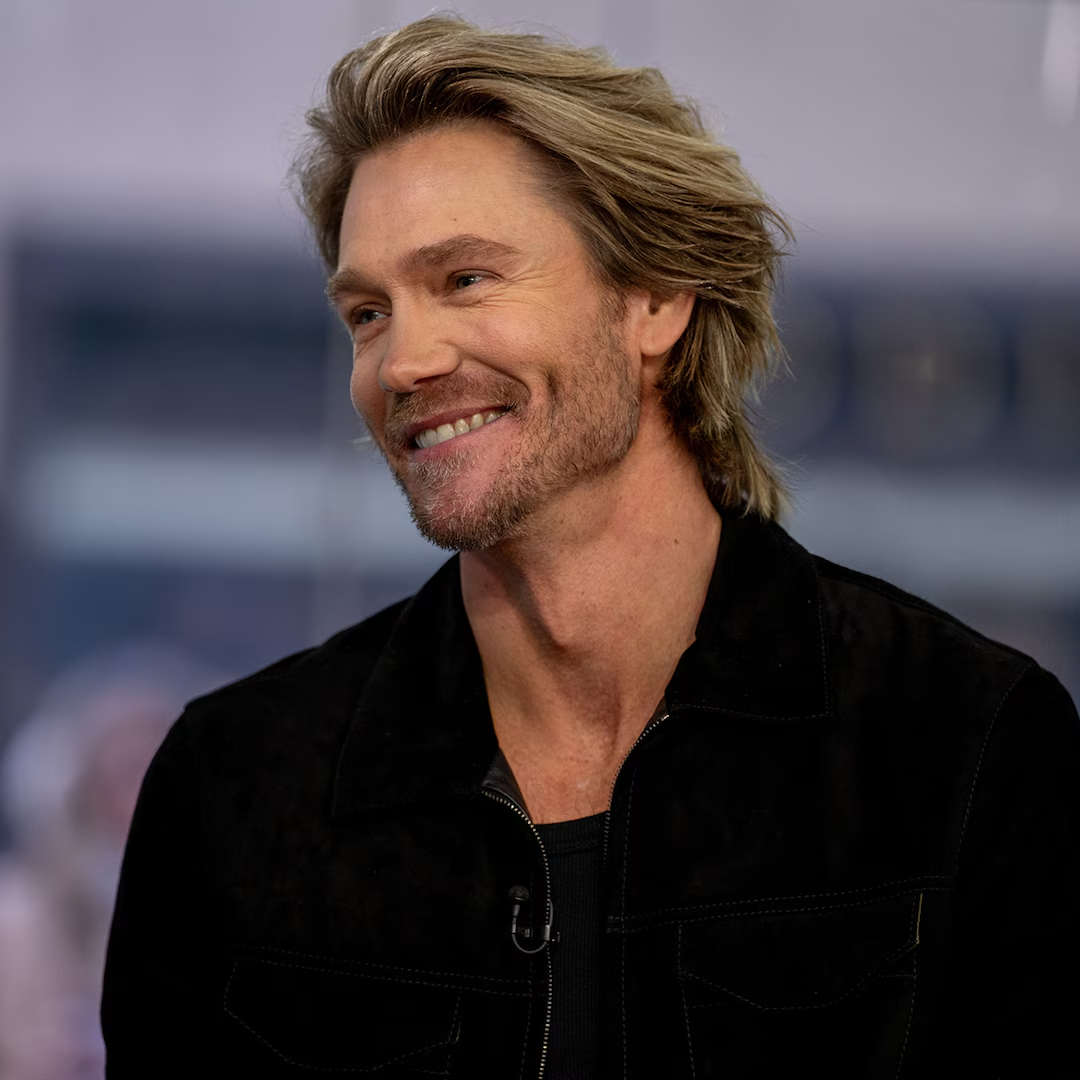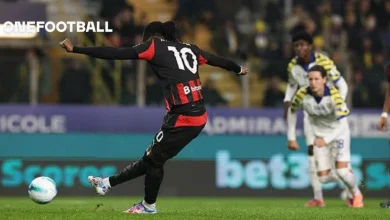‘We all gasped’: witches weren’t the only thing haunting Wicked: For Good

Normal text sizeLarger text sizeVery large text size
As a kid growing up in Palo Alto, in northern California, Jon M. Chu watched his father working in the kitchen of the family’s restaurant, Chef Chu’s. Though he did not realise it at the time, Lawrence Chu was teaching his son the rudiments – or should that be the ingredients? – of filmmaking. Those lessons have since paid extraordinary dividends.
“When you are collecting the ingredients and putting the things in the wok and putting the garnishes and the things on the side, you’re not yet making the dish, you’re just getting the best of each element,” Chu says. “Then you get to put a little dash of sugar or salt, and then you get to present it on a plate and add the colours and other things.”
As a filmmaker, Chu says, “we’re not making the movie, we’re making the moments of a character that could be in the movie, so it takes a lot of pressure off me when I’m shooting. It’s when I’m in the edit room that I get to put the little dash of this and that. I find a lot of solace in understanding that process because I trust that process.”
Chu parlayed an early slate in music concert films Justin Bieber: Never Say Never (2011) and Justin Bieber’s Believe (2013) into one of the biggest comedy hits of the last decade, Crazy Rich Asians (2019). He followed that with In the Heights (2021) and Wicked (2024) and now unveils the highly anticipated sequel – the second half of the show, if you saw it first on stage – Wicked: For Good.
Ariana Grande as Glinda and Cynthia Erivo as Elphaba in Wicked: For Good.Credit: Universal Films
Based on Gregory Maguire’s 1995 novel Wicked, which was a sort of reimagining of L. Frank Baum’s 1900 novel The Wonderful Wizard of Oz and its 1939 film adaptation The Wizard of Oz, Wicked is the story of Elphaba Thropp (Cynthia Erivo) and Galinda Upland (Ariana Grande), destined in the wider Oz canon to become the Wicked Witch of the West and Glinda the Good Witch of the North.
On the stage, as with the film, the intermission of Wicked is a seismic moment. Explosive, both in terms of the twists and turns to the story, and also the musicality of the scene. And then the curtain comes down with a crash. But in the theatre, the audience take a detour to the foyer bar, to have a piece of cheese with their wine, and return to their seats 30 minutes later.
The intermission between the films Wicked and Wicked: For Good is substantially longer – a year, basically – meaning both the filmmaker and the audience have to navigate the passage of time differently, not least because some people in the audience likely need a reminder of what happened the first time around.
“The second act of the show is our second movie and our second movie is a little bit different to the second act of the show,” Chu says. “I had a lot of questions that I asked about the show, about the characters, so in this movie, by separating [into two films], we got to fulfil those things. Emotional logic. How does it feel to live on your own once you’ve made a decision like you’re checking out of society, and you’re going to fight the wizard and fight power?
“What was interesting about when we started to ask ourselves those questions, it became more relevant for us,” Chu adds. “Two characters that we’ve bonded in a full movie and are now separate, and you’re testing that friendship – two people who have very different views of the world now and the world is pulling them even further apart. How do you connect those dots and the nerve endings of that?
“[In the second movie], we get to say, OK, now let’s take everything we’ve loved, all that set-up, all these characters and let’s throw them to the wolves here, or to the lions and tigers and bears, and see how they would survive these actual three-dimensional characters,” Chu says. “So we get to do that. We get to go there with them.”
There in spirit: Bert Lahr as the Cowardly Lion, Ray Bolger as the Scarecrow, Judy Garland as Dorothy and Jack Haley as the Tin Man in The Wizard of Oz.Credit: Warner Bros
While the world of Wicked might seem fantastical (it is, after all, a land populated by a wizard and witches, munchkins, flying monkeys and ruby slippers that can tap you across universes) Chu acknowledges that the film’s story – the weaponisation of narrative, and how information can be perverted for power – has a timely resonance in a real world where the media ecosystem is fracturing and political universes are shifting.
“I wouldn’t be spending all this time and energy and time away from my family if I didn’t believe fully in what we are saying in this story and what we’re saying in this story is always about where we are,” Chu says. “That doesn’t mean it’s political. The story was written 20-something years ago, and [the book] The Wizard of Oz was written a hundred years ago.
“We’re telling the story of the Wizard of Oz and Elphaba and Glinda, but those questions – who are they making you fear, and who are they making you cheer for? – those are questions that we should probably be asking ourselves every few years, and we’re just in that [cycle]. We started this project during the COVID lockdowns, and I felt compelled to do this movie just from Elphaba’s words: something has changed within me, something’s not the same.”
Fiyero (Jonathan Bailey) and Glinda (Ariana Grande) in Wicked: For Good.Credit: Universal Pictures
In that sense, Chu says, Wicked is the same “timeless sort of tale or fable in the way of Animal Farm or 1984 or all those things. The reason they last is because we are human beings and this is all in our nature.”
Loading
Perhaps the most visually extraordinary aspect of Wicked and Wicked: For Good is not how much was magically rendered in post-production, but how much of it existed in the real world as physical sets and props. There is an established sense of the architecture of Oz – in part, because of our near-universal familiarity with the 1939 film – which subtly informs the DNA of the later films.
Chu leans immediately into the phrase “music is liquid architecture; architecture is frozen music”, a metaphor attributed to the German writer Johann Wolfgang von Goethe, which implies that both forms of expression share qualities such as rhythm, harmony and proportion. It is as true on the set of Wicked: For Good as it is on the set of Star Wars or Harry Potter, other cinematic universes whose physical structure is immediately recognisable.
“It is a lyrical world – it’s a world where the language is movement and music,” Chu says. “So when I think of these places, and in order to believe that Oz actually exists, we have to build a culture, a culture that we never even explain on camera, but we had to know it, we had to know Munchkinland, and Emerald City … how does that work, where is the road, when is the train?
“How do we create it that Elphaba feels like she’s the only one in Oz that doesn’t fit? Everything’s circular except for her hat and everything she has is angular. And everything is every other colour except green,” Chu says. “So it allows us to have conversations about physical space. To me, those details are what make this touchable to an audience instead of, oh, this is just another land and another place.”
She’ll get you, and your little dog too. Cynthia Erivo as Elphaba, the Wicked Witch of the West, in Wicked: For Good.Credit: Universal Pictures
The completeness of the fantasy, both for the audience watching the films and for the actors and crew inhabiting it during production, closes the world of Oz in an unexpected and interesting way. The imaginary fourth wall never seems to exist here. To Chu, and to Grande and Erivo, Oz is as real as the real world. And perhaps, like all art connected to a legacy as powerful as The Wizard of Oz, it is inevitable that they would share the space with artistic ghosts.
The physical spaces are a universe apart: Wicked and Wicked: For Good were primarily filmed at Sky Studios Elstree in the UK, while The Wizard of Oz was filmed at the Metro-Goldwyn-Mayer Studios in Culver City, California.
Elphaba (Cynthia Erivo) and Fiyero (Jonathan Bailey) in Wicked: For Good.Credit: Universal Pictures
But the moment they started painting the yellow brick road onto the floor of the sound stage, there was a strange synchronicity between the two worlds, says Chu. At times there was the faint artistic echo of Margaret Hamilton and Billy Birkin, who played the original Elphaba and Glinda, and even Judy Garland, who played its stranded heroine Dorothy Gale, was felt very deeply in the present.
“I’ve never had that experience before, but when there was the yellow brick road in front of you, and you have the Tin Man, the scarecrow, Dorothy … it wasn’t just me, it was the whole crew, we all gasped,” Chu says. “The whole day you’re like, we get to do this, and you feel the presence, and maybe a responsibility to make sure it is up to par and that you are doing it justice.
“I think that did haunt us, and not just that movie, it’s the show itself,” Chu adds. “I felt Idina and Kristen [who played Elphaba and Glinda in the Broadway musical, on which the films are based] in every scene of that. I felt it with every piece of this. I felt L. Frank Baum [the author of the original books] when you’re creating the silhouette of the Wicked Witch, or Emerald City.
Ariana Grande in Wicked: For Good.Credit: Universal Films
“We all made sure that we had to dedicate our whole lives to this for five years,” Chu says. “We dedicated our lives to this, thinking about it, sleeping about it, redoing things over and over again to make sure it was right. Yes, I would say those ghosts haunted us, but also in a weird way it felt like we were part of a great tradition.”
Loading
Splitting Wicked into two films also seems to have created a new Hollywood business model for adapting Broadway musicals to the big screen. In the past the mission was to compress the stories and songs into a single film, not always to great effect. The Wicked model splits at the intermission point, and gives the studio a double bite of the revenue cherry. (Which helps, especially when the budget is $US300 million [$459 million] for both films.) The next one? Chu is reportedly signed on to direct Joseph and the Amazing Technicolor Dreamcoat.
“I would be so lucky in my life to be able to do movie musicals the rest of my life,” Chu says. “It’s the most beautiful genre. It is the greatest genre on film, in my mind. The breadth of what you are allowed to do is so large. It’s not about the scope, it’s about getting into the characters further. You have permission from the start of the movie to go from the inside out to hear their inner voice.
“So you get all the tools of cinema, and you get all these extra layers of access to these characters. What more can a storyteller want?” Chu says. “It’s not easy to uncover what the soul of a musical is in order to bring that out in the movie version of that, but because I am a music lover, a movement lover, and a musical stage lover, I know what I fell in love with. I know when I first saw Wicked before it was on Broadway, I remember what that made me feel.
“I’m excited. I think there’s a lot more to do in this space, and we need more filmmakers to work in this space because there’s more innovation to come. I think we’re just hitting the surface right now.”
Wicked: For Good opens on November 20.
Must-see movies, interviews and all the latest from the world of film delivered to your inbox. Sign up for our Screening Room newsletter.





